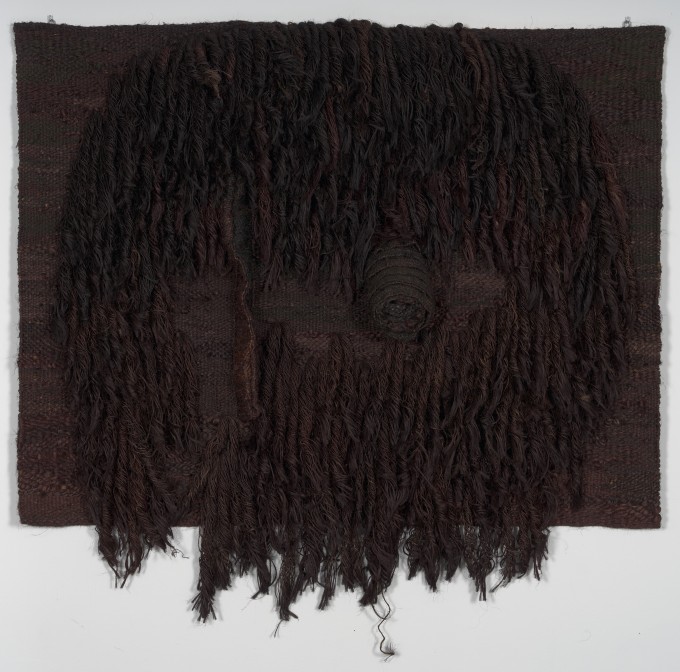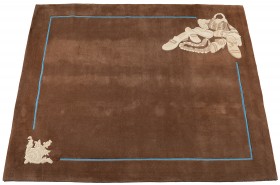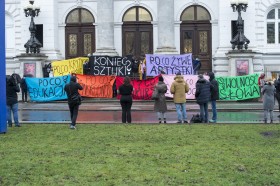La Seur
- type of object: textiles
- date: 1979
- material/technique: sisal
- dimensions: 180 x 190 x 25 cm
- inventory No.: RZ-79
- image licensed under: CC BY-SA
In 1979, Magdalena Abakanowicz became a professor at the State College of Fine Arts in Poznań, and in the same year she created the relief textile La Seur. This form of artistic expression brought her fame — in 1965 she won a prize at the São Paulo Biennial for a series of such textiles. Although not fully three-dimensional, this work can be described as an ‘abakan’ — a term that emerged in connection with the aforementioned Biennial and an exhibition in Zachęta in the same year, referring specifically to spatial relief textiles. Works of this kind have been rediscovered in recent years, following the artist’s death in 2017. At a certain point in her career, she distanced herself from them and turned to sculpture, which is considered a superior (and undoubtedly more durable) genre in the classical hierarchy of art. La Seur is an intermediate form — it hangs on the wall but partially extends into the room through ropes and knots. It has little in common with traditional tapestries, which have a decorative function. Dark in colour (brown, black, beige, red), it has a menacing, biological form. It resembles a large vagina on public display, which could be interpreted as a feminist manifesto, were it not for the fact that the artist often distanced herself from feminism, claiming that all interpretations of her art are possible. This work exudes a primal power that can be associated with Abakanowicz’s journey ‘to the sources of energy’ (1976) — to New Guinea, Thailand, Celebes, Bali, Sumatra and Java. In 1979, at the Lausanne Tapestry Biennial, the sculptor presented three black, three-dimensional forms entitled Pour Contemplation.






